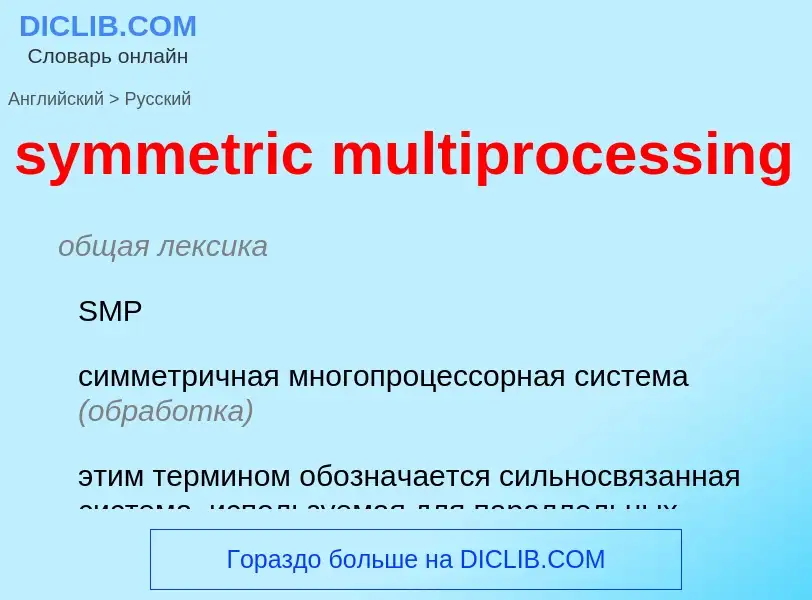Перевод и анализ слов искусственным интеллектом ChatGPT
На этой странице Вы можете получить подробный анализ слова или словосочетания, произведенный с помощью лучшей на сегодняшний день технологии искусственного интеллекта:
- как употребляется слово
- частота употребления
- используется оно чаще в устной или письменной речи
- варианты перевода слова
- примеры употребления (несколько фраз с переводом)
- этимология
symmetric multiprocessing - перевод на русский
общая лексика
SMP
симметричная многопроцессорная система (обработка)
этим термином обозначается сильносвязанная система, используемая для параллельных вычислений, в которой однотипные процессорные элементы управляются единой операционной системой, причем каждый процессор имеет одинаковый доступ к устройствам ввода-вывода и все процессоры делят общее пространство памяти. Задачи (потоки) распределяются между разными процессорами. Так как все процессоры рассматриваются как эквивалентные, то новая задача поступает на процессор с наименьшей рабочей загрузкой на момент диспетчеризации задач. Процессоры взаимодействуют друг с другом по так называемой шине межсоединения
Смотрите также
общая лексика
криптография с симметричными шифрами
использует один и тот же секретный ключ для операций шифрования и дешифрования
Смотрите также
Определение
Википедия
Symmetric multiprocessing or shared-memory multiprocessing (SMP) involves a multiprocessor computer hardware and software architecture where two or more identical processors are connected to a single, shared main memory, have full access to all input and output devices, and are controlled by a single operating system instance that treats all processors equally, reserving none for special purposes. Most multiprocessor systems today use an SMP architecture. In the case of multi-core processors, the SMP architecture applies to the cores, treating them as separate processors.
Professor John D. Kubiatowicz considers traditionally SMP systems to contain processors without caches. Culler and Pal-Singh in their 1998 book "Parallel Computer Architecture: A Hardware/Software Approach" mention: "The term SMP is widely used but causes a bit of confusion. [...] The more precise description of what is intended by SMP is a shared memory multiprocessor where the cost of accessing a memory location is the same for all processors; that is, it has uniform access costs when the access actually is to memory. If the location is cached, the access will be faster, but cache access times and memory access times are the same on all processors."
SMP systems are tightly coupled multiprocessor systems with a pool of homogeneous processors running independently of each other. Each processor, executing different programs and working on different sets of data, has the capability of sharing common resources (memory, I/O device, interrupt system and so on) that are connected using a system bus or a crossbar.


